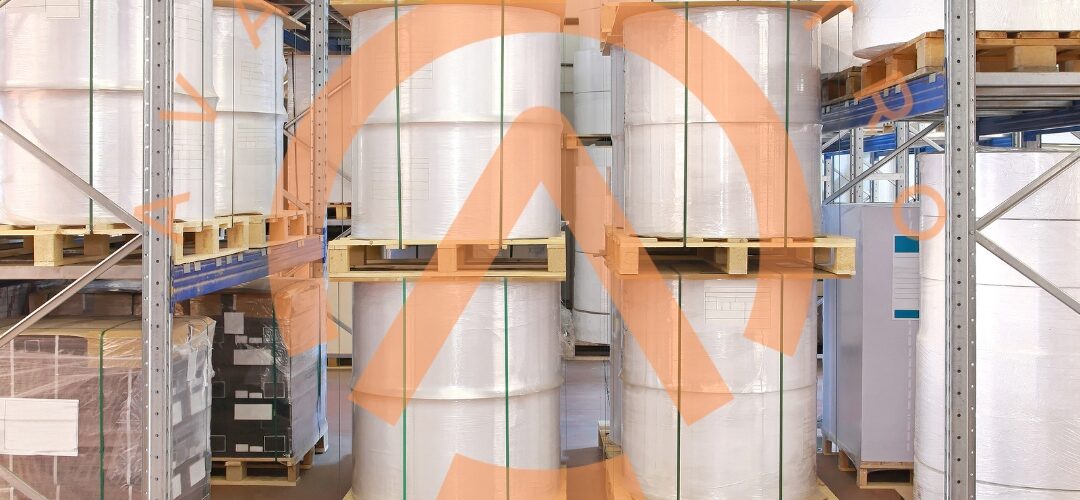Caustic Soda’s Role in Paper Bleaching
In the world of paper production, the journey from wood pulp to pristine white paper involves a crucial step known as bleaching. This process is integral to achieving the desired brightness and quality of paper products. One of the key players in this process is caustic soda, also known as sodium hydroxide (NaOH). In this article, we will delve into the significance of caustic soda in paper bleaching, its role in breaking down lignin and other impurities, and its environmental considerations.
Table of Contents
- Introduction
- Understanding the Bleaching Process
- The Role of Caustic Soda
- Interaction with Lignin
- ypes of Bleaching
- Elemental Chlorine-Free (ECF) Bleaching
- Chlorine Dioxide Bleaching
- Oxygen Bleaching
- Totally Chlorine-Free (TCF) Bleaching
- Environmental Concerns and Sustainability
- Advantages and Disadvantages
- Caustic Soda Suppliers: AvavinPetro
- Caustic Soda Handling and Safety Measures
- Innovations in Bleaching Technologies
- Future Trends in Paper Bleaching
- Conclusion
- Frequently Asked Questions (FAQs)
Introduction
The journey of raw wood pulp to pristine white paper involves a series of intricate processes, with bleaching playing a pivotal role. Paper bleaching is not only about achieving the desired level of whiteness but also ensuring the removal of impurities and colorants that can affect the final product’s quality. Caustic soda, a strong alkaline compound, stands as a critical agent in this process.
Understanding the Bleaching Process
Bleaching is the process of removing lignin, residual color, and other impurities from wood pulp to obtain the desired whiteness and brightness. Lignin, a complex polymer that gives wood its rigidity, can also cause discoloration and compromise paper strength. The bleaching process enhances the paper’s aesthetics, texture, and performance.
The Role of Caustic Soda
Caustic soda is a cornerstone of the paper bleaching process due to its powerful alkaline properties. It is highly effective in breaking down lignin and other unwanted compounds, facilitating their removal from the wood pulp. Its versatility lies in its ability to be used in various bleaching stages, either alone or in combination with other chemicals.
Interaction with Lignin
Lignin, although essential for the structure of trees, poses challenges in papermaking. Caustic soda’s hydrolysis action cleaves the bonds between lignin and cellulose fibers, leading to the isolation of cellulose. This isolated cellulose contributes to the paper’s strength and brightness, while lignin-rich compounds are washed away during subsequent washing stages.
Types of Bleaching
Various bleaching methods are employed in the paper industry, each with its own set of benefits and considerations:
• Elemental Chlorine-Free (ECF) Bleaching: Involves chlorine compounds, minimizing environmental impact.
• Chlorine Dioxide Bleaching: Effective in breaking down lignin and reducing color without excessive chlorine use.
• Oxygen Bleaching: Environmentally friendly, uses oxygen and peroxides to remove color.
• Totally Chlorine-Free (TCF) Bleaching: Free from chlorine compounds, emphasizes sustainability.
Environmental Concerns and Sustainability
While caustic soda plays a vital role in paper bleaching, its usage raises environmental concerns. The chemical process generates waste products, including sodium salts and lignin byproducts, which need careful management. Industry advancements are geared toward reducing the ecological footprint of bleaching processes.
Advantages and Disadvantages
The benefits of caustic soda in paper bleaching are numerous, including its effectiveness in breaking down lignin, flexibility in use, and compatibility with other bleaching agents. However, it’s essential to acknowledge the challenges associated with waste management and the potential ecological impact.
Caustic Soda Suppliers: AvavinPetro
When sourcing caustic soda for your paper bleaching needs, it’s crucial to partner with reliable suppliers. AvavinPetro is a well-known and trusted supplier of high-quality caustic soda. Their commitment to quality and sustainable practices makes them a preferred choice for industries relying on caustic soda for various applications.
Caustic Soda Handling and Safety Measures
Caustic soda requires careful handling due to its corrosive nature. Workers must follow strict safety protocols to prevent accidents and protect themselves from exposure. Proper storage, protective gear, and training are crucial aspects of caustic soda handling.
Innovations in Bleaching Technologies
The paper industry is continuously seeking innovative methods to improve bleaching efficiency while reducing environmental impact. Advanced technologies aim to optimize chemical usage, minimize waste generation, and enhance the overall sustainability of the bleaching process.
Future Trends in Paper Bleaching
As sustainability takes center stage in the paper industry, the future of bleaching is likely to witness advancements in cleaner and more efficient bleaching methods. Collaborative efforts between industry players, researchers, and environmental advocates will drive the evolution of bleaching technologies.
Conclusion
Caustic soda’s role in paper bleaching is undeniable, as it contributes to the production of high-quality paper products. Its ability to break down lignin and remove impurities is crucial for achieving the desired paper characteristics. While challenges related to environmental impact exist, ongoing innovations are paving the way for more sustainable and eco-friendly bleaching practices.
Frequently Asked Questions (FAQs)
1. Is caustic soda the only chemical used in paper bleaching? Caustic soda is one of the chemicals used; however, various bleaching methods may involve other agents as well.
2. How does oxygen bleaching differ from chlorine-based bleaching? Oxygen bleaching uses oxygen and peroxides to remove color, while chlorine-based bleaching employs chlorine compounds for the same purpose.
3. What measures are taken to minimize the environmental impact of paper bleaching? Industry advancements focus on optimizing chemical usage, waste reduction, and adopting chlorine-free bleaching methods.
4. Can caustic soda be replaced with more sustainable alternatives? Research is ongoing to identify and develop more sustainable bleaching agents that have a lower environmental impact.

